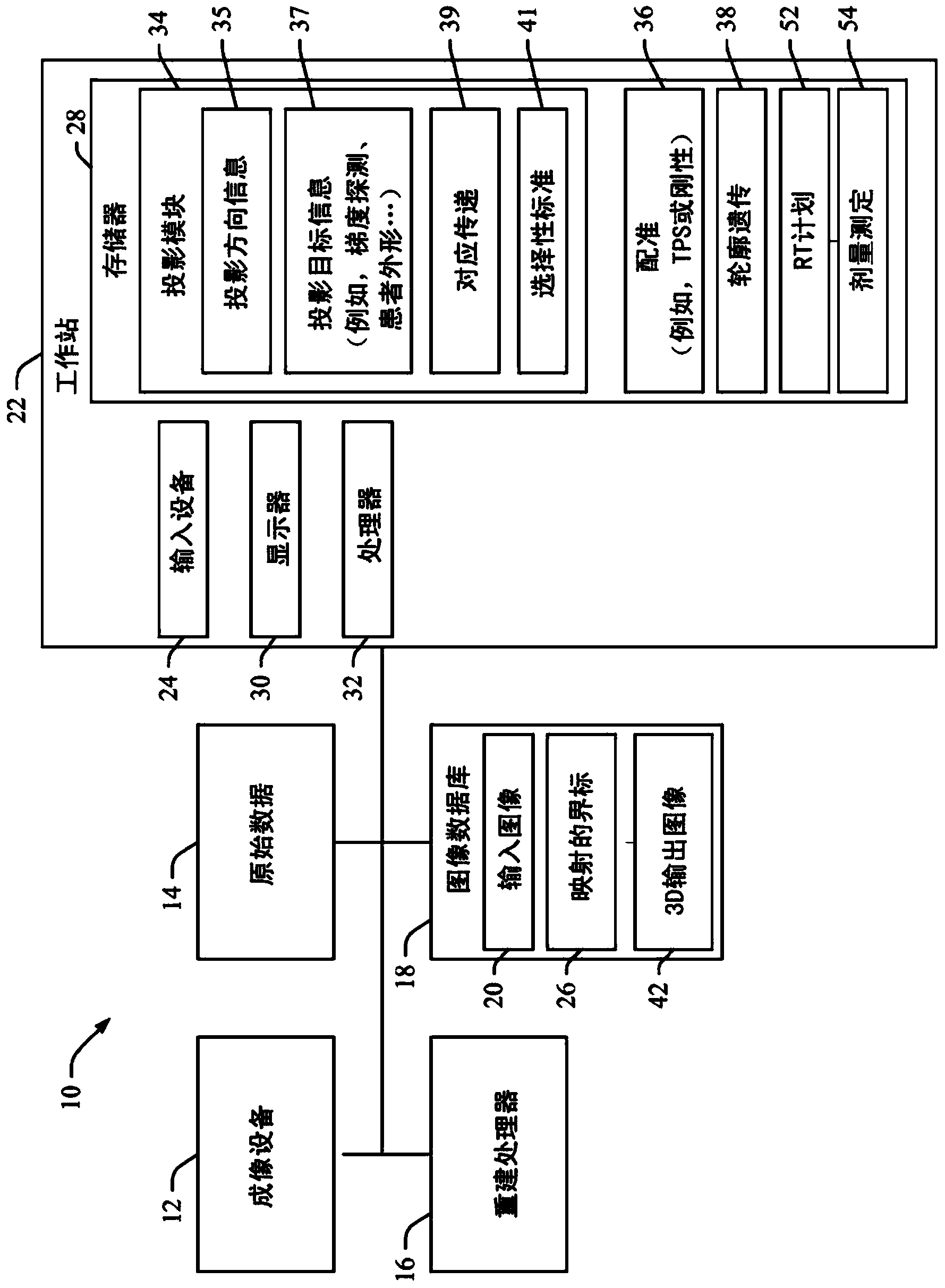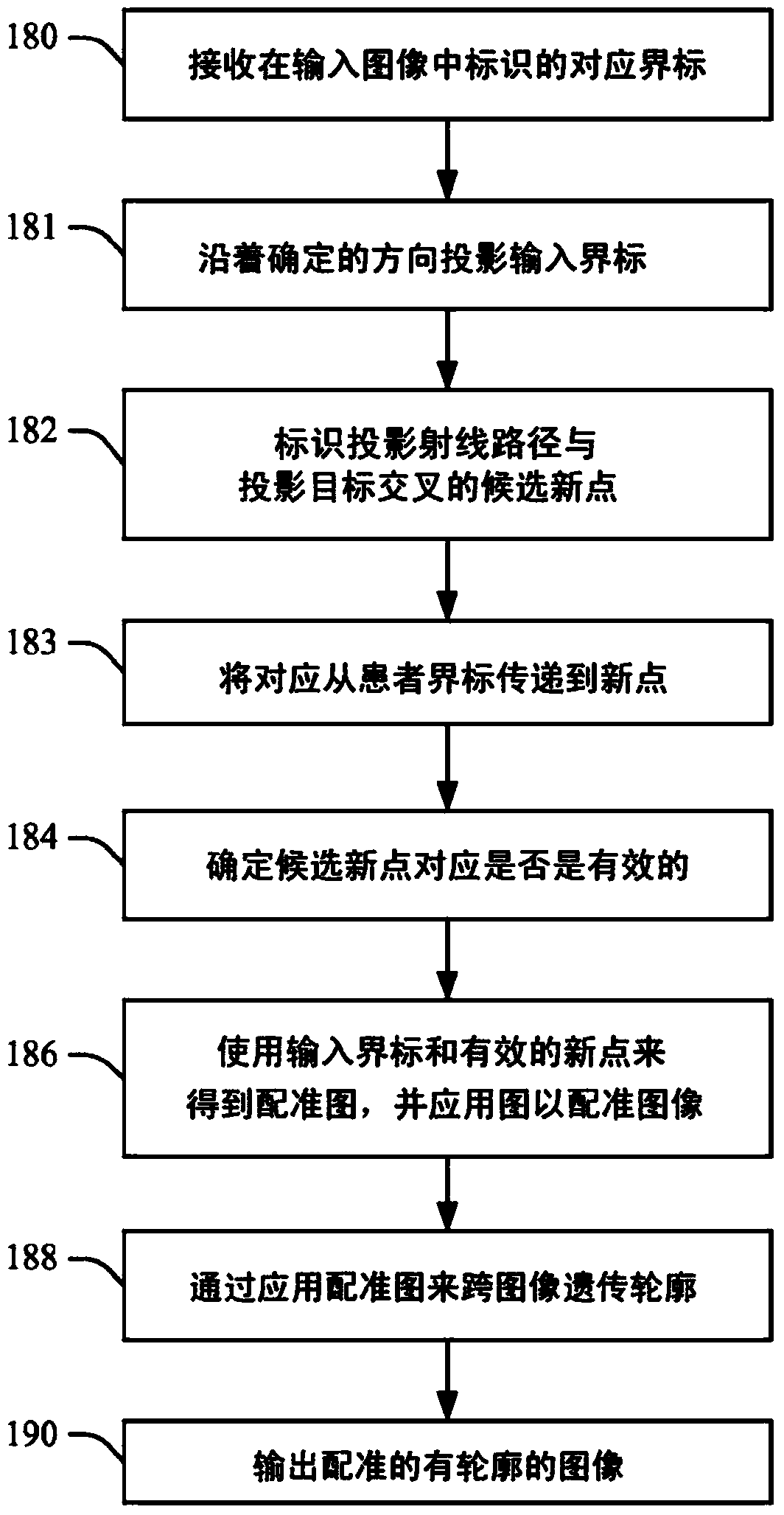Automatic projection of landmarks to generate additional correspondences in image registration
An automatically generated, in-image technique used in medical imaging systems to address issues such as the lack of acceptable densities for matching landmarks
- Summary
- Abstract
- Description
- Claims
- Application Information
AI Technical Summary
Problems solved by technology
Method used
Image
Examples
Embodiment Construction
[0017] The subject innovation overcomes the foregoing problems by using directional projections to automatically generate additional point correspondences from existing corresponding point landmarks in multiple multidimensional images. Images can have any dimension from two upwards. The input existing landmarks may have been manually or automatically located, labeled and matched in the input plurality of images. The delivered additional correspondence between projected landmarks can improve the quality of landmark-based image registration and any downstream processing such as registration-based image segmentation (contour inheritance) or image fusion. The methods and systems described herein can be used to efficiently facilitate deformable registration in any context (whether based on manual landmarks or automatic points of interest), and to facilitate its development, for example for contour genetics on multidimensional image data. Or for multimodal fusion. In the specific ...
PUM
 Login to View More
Login to View More Abstract
Description
Claims
Application Information
 Login to View More
Login to View More - R&D
- Intellectual Property
- Life Sciences
- Materials
- Tech Scout
- Unparalleled Data Quality
- Higher Quality Content
- 60% Fewer Hallucinations
Browse by: Latest US Patents, China's latest patents, Technical Efficacy Thesaurus, Application Domain, Technology Topic, Popular Technical Reports.
© 2025 PatSnap. All rights reserved.Legal|Privacy policy|Modern Slavery Act Transparency Statement|Sitemap|About US| Contact US: help@patsnap.com



